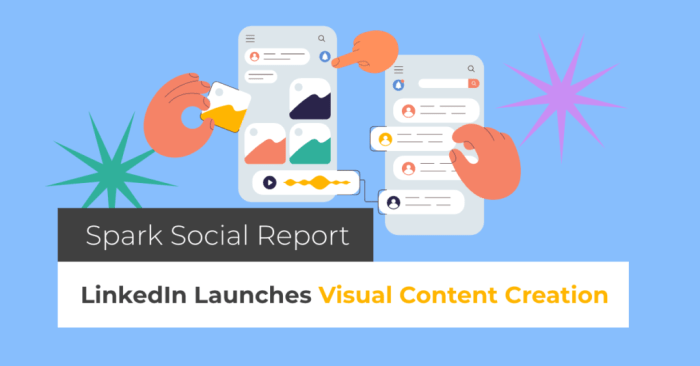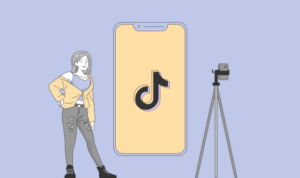Creating Visual Content for LinkedIn takes center stage in the world of professional networking, where captivating graphics can make or break your online presence. Get ready to dive into the realm of visual storytelling and discover how to stand out on this platform with style and substance.
Importance of Visual Content on LinkedIn
Visual content plays a crucial role in engaging the audience on LinkedIn. In a platform where professionals connect and share insights, visual elements such as images, videos, infographics, and presentations help grab attention and convey information more effectively than plain text.
Types of Successful Visual Content on LinkedIn
- Infographics: Visual representations of data and information that are easy to digest and share.
- Video Content: Engaging videos that showcase products, services, or thought leadership.
- Presentations: Slide decks that offer valuable insights or tips in a visually appealing format.
Statistics on the Impact of Visual Content on LinkedIn
According to a study by LinkedIn, posts with images receive 98% more comments compared to text-only posts.
Visual content on LinkedIn generates 1200% more shares than text and images combined.
Video content on LinkedIn gets 5 times more engagement than other types of content.
Types of Visual Content for LinkedIn

When it comes to creating visual content for LinkedIn, there are various types you can use to make your profile stand out and engage your audience. Each type of visual content has its own benefits and can be used strategically based on your message or goal.
Images
Using images on LinkedIn is a great way to grab the attention of your audience quickly. Whether it’s a professional headshot, a behind-the-scenes look at your work, or a visually appealing graphic related to your industry, images can help you showcase your personality and expertise. Make sure your images are high-quality and relevant to your brand to make a strong impact.
Infographics
Infographics are perfect for presenting complex information in a visually appealing way. They can help you communicate data, statistics, or processes in a more engaging format that is easy for your audience to understand. When creating infographics, focus on simplicity, clarity, and a cohesive design to make them effective on LinkedIn.
Videos
Videos are a powerful tool for storytelling and connecting with your audience on a deeper level. Whether it’s a company introduction, a product demo, or a thought leadership piece, videos can help you showcase your personality and expertise in a dynamic way. Remember to keep your videos concise, engaging, and relevant to your audience to drive engagement on LinkedIn.
Tips for Choosing the Right Type of Visual Content, Creating Visual Content for LinkedIn
– Consider your message: Think about what you want to communicate and choose a visual format that best conveys that message.
– Know your audience: Understand who your audience is and what type of visual content they are most likely to engage with.
– Stay on brand: Make sure your visual content aligns with your brand identity and values to maintain a consistent look and feel across your LinkedIn profile.
Design Principles for Creating Visual Content
When creating visual content for LinkedIn, it’s essential to consider key design elements that will make your posts stand out and attract your audience. From choosing the right color scheme to maintaining consistency in branding, here are some important design principles to keep in mind.
Branding and Consistency
Branding plays a crucial role in creating visual content for LinkedIn. Your visuals should reflect your brand identity, including logo, colors, and overall tone. Consistency in visual elements across all your posts helps in building brand recognition and trust among your audience. Make sure to use the same fonts, colors, and design elements in all your visuals to create a cohesive brand image.
Maintaining Professionalism
While it’s important to be visually appealing, it’s equally crucial to maintain professionalism in your visual content. Avoid using overly casual or unprofessional images that may not align with your brand or the platform’s professional environment. Choose high-quality images, graphics, and fonts that convey a sense of professionalism and credibility. Remember, you can be creative while still being professional in your visual content on LinkedIn.
Tools and Software for Creating Visual Content

Creating engaging visual content for LinkedIn requires the right tools and software to bring your ideas to life. Let’s explore some popular options and how to make the most of them.
Canva
Canva is a user-friendly graphic design platform that offers a wide range of templates, fonts, and graphics to create stunning visuals. It is known for its ease of use, even for those with no design experience. Canva also offers a free version with basic features, as well as a paid version with more advanced tools and templates.
Adobe Spark
Adobe Spark is another powerful tool for creating visual content, offering templates for social media graphics, web pages, and videos. It provides a seamless integration with Adobe Creative Cloud for those who are already familiar with Adobe products. Adobe Spark offers a free version with limited features, as well as a paid version with more customization options.
Piktochart
Piktochart is a great option for creating infographics, presentations, and reports. It offers a user-friendly interface with drag-and-drop functionality, making it easy to create professional-looking visuals. Piktochart also provides templates and design elements to help you get started quickly. It has a free version with basic features, as well as a paid version for more advanced users.
Tips for Effective Visual Content Creation
– Choose a tool that aligns with your design skills and needs.
– Utilize templates to save time and maintain consistency in your visual content.
– Incorporate your brand colors, fonts, and logo to create a cohesive look across all visuals.
– Experiment with different features and tools to enhance the visual appeal of your content.
– Keep your visuals simple, clear, and relevant to your audience to maximize engagement on LinkedIn.
Best Practices for Posting Visual Content on LinkedIn: Creating Visual Content For LinkedIn
When it comes to posting visual content on LinkedIn, following best practices can help you maximize reach and engagement with your audience. Here are some key strategies to keep in mind:
Optimal Posting Times
- Post during peak hours: Aim to post visual content during times when your target audience is most active on LinkedIn, typically during weekdays in the morning or early afternoon.
- Experiment with timing: Test different posting times to see when your content receives the most engagement and adjust your posting schedule accordingly.
Maximizing Reach and Engagement
- Create compelling visuals: Make sure your visuals are eye-catching, relevant, and aligned with your brand to capture your audience’s attention.
- Use relevant hashtags: Incorporate relevant hashtags in your visual content to increase discoverability and reach a wider audience.
- Encourage interaction: Include a call-to-action in your visual posts to encourage likes, comments, and shares from your connections.
Analyzing Performance Metrics
- Track engagement metrics: Monitor key performance indicators such as likes, comments, shares, and click-through rates to understand how your visual content is resonating with your audience.
- Measure reach and impressions: Analyze the reach and impressions of your visual posts to assess the effectiveness of your content strategy and make data-driven decisions for future posts.
- Refine your strategy: Use insights from performance metrics to refine your visual content strategy, optimize posting times, and create more engaging visuals that resonate with your audience.
